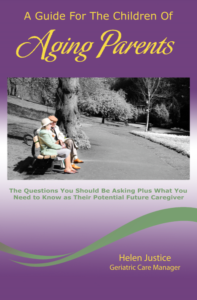In the U.S., over one million Americans suffer from Parkinson’s disease (approximately 10 million worldwide). Every year, 60,000 Americans are diagnosed with Parkinson’s. The frequency and severity of this disease increases with age. An estimated four percent of people with Parkinson’s disease are diagnosed before the age of 50.
Unfortunately, many of us do not understand the impact this disease can have on our families and loved ones. Many of us do not know what it is, how to treat it, or even what the signs are.
What is Parkinson’s disease?
Parkinson’s disease is a progressive disorder of the nervous system. Due to increased changes in heredity, men are more likely to develop Parkinson’s than women. The disease usually develops around age 60. Ongoing exposure to herbicides and pesticides may put an individual at a slightly increased risk.
What are some signs of Parkinson’s?
Tremors. Shaking can begin in a limb.
Slowed movement. Parkinson’s may reduce the ability to move and slow movement. Steps may become shorter when walking.
Rigid muscles. Muscle stiffness may occur in any part of the body and can cause pain.
Impaired posture and balance. Posture may become stooped, balance problems may also result.
Loss of Automatic Movements. Decreased ability to perform unconscious movements including blinking, smiling or swinging arms while walking.
Speech Changes. One may start to speak softly, quickly, slur or even hesitate before talking. Speech may be more of a monotone rather than with the usual speech inflections.
Writing Changes. It may become hard to write or text size may become smaller.
Dementia. A person with Parkinson’s disease has 2-6 times the risk of exhibiting symptoms of dementia compared to the general population.
How Parkinson’s is diagnosed?
No specific test exists to diagnose this disease. A neurologist will attempt to diagnose Parkinson’s based on one’s signs and symptoms, a neurological and physical examination, and one’s medical history. Doctors may order tests to rule out other conditions that may be causing the symptoms.
If Parkinson’s is not controlled?
Thinking difficulties. Cognitive problems such as dementia, which usually occur in the later stages of Parkinson’s, are likely to develop and aren’t responsive to medication.
Depression and emotional changes. Fear, anxiety, loss of motivation and depression can make dealing with Parkinson’s hard but these issues can be treated with medication.
Swallowing problems. Difficulties with swallowing as the condition progresses. Saliva may accumulate in the mouth due to slowed swallowing, leading to drooling.
Sleeping problems and disorders. Issues sleeping, including waking up frequently or early, is very common.
Bladder problems. Inability to control urine or even having difficulty urinating can occur.
Constipation. A slower digestive tract can cause constipation in those with Parkinson’s.
Blood pressure changes. Feeling dizzy or light-headed when you stand is common.
Scent dysfunction. Problems with a sense of smell or identifying odors may.
Fatigue. Many people with Parkinson’s lose energy and experienced increased fatigue.
Pain. May people with Parkinson’s disease experience pain.
Treating Parkinson’s
Carbidopa-levodopa is a Parkinson’s disease medication. Improvement with this medication will often confirm a diagnosis of Parkinson’s disease. This medication comes in pill form as well as an infusion, which is administered through a feeding tube that delivers the medication in a gel form directly to the small intestine.
Dopamine agonists mimic dopamine effects in your brain. This isn’t usually as effective as levodopa in treating symptoms however it may be used in conjunction with levodopa to smooth the sometimes off-and-on effect of levodopa.
MAO-B inhibitors. Help prevent the breakdown of brain dopamine (includes side effects such as nausea or insomnia).
Catechol-O-methyltransferase inhibitors. Medication mildly prolongs the effect of levodopa therapy by blocking an enzyme that breaks down dopamine.
Anticholinergics. Used for many years to help control the tremor associated with Parkinson’s disease. Modest benefits are often offset by side effects such as impaired memory, confusion, hallucinations, constipation, dry mouth and impaired urination.
Amantadine. Provide short-term relief of symptoms of mild, early-stage Parkinson’s disease. It may also be given with carbidopa-levodopa therapy during the later stages of Parkinson’s disease to control involuntary movements.
Deep Brain Stimulation. Surgeons impact electrodes into a specific part of your brain. The electrodes are connected to a generator implanted in your chest near your collarbone that sends electrical pulses to the brain and may reduce symptoms.
Lifestyle changes including aerobic exercise, physical therapy to focus on balance and stretching may be an option.
Prevention of Parkinson’s
Doctor’s are not certain what causes of Parkinson’s nor have clearly proven way to prevent the disease. Some research has shown that caffeine (found in coffee, tea and cola) or green tea may reduce the risk of developing Parkinson’s disease.
What Causes Parkinson’s
Generally. Generally Doctor’s are unaware of the cause.
Genetically. About 15-20% of Parkinson’s cases report having a relative with the disease, however researchers have found that people with an affected first-degree relative, have a 4-9% higher chance of developing Parkinson’s.
Chemically. In 2009, the Department of Veterans Affairs added Parkinson’s to a list of diseases possibly associated with exposure to Agent Orange. Another compound, a synthetic neurotoxin agent called MPTP can also cause immediate and permanent parkinsonism. This compound was discovered in the 1980s in those who injected themselves with a synthetic form of heroin contaminated with MPTP. Cases of this MPTP induced Parkinson’s are rare. A veteran who was exposed to this herbicide may have a strong case for a VA service connected compensation claim for benefits.
Economic Burden of Parkinson
The cost of Parkinson’s, including treatment, social security payments and lost income from an inability to maintain employment, is estimated to be nearly $25 billion dollars per year in the United States alone. Medication costs for an individual with Parkinson’s disease average $2,500 per year and therapeutic surgery can cost up to $100,000 dollars per patient.
Famous People with Parkinson’s Disease
Muhammad Ali (diagnosed 1984 at the age of 42)
Michael J. Fox (diagnosed 1991 at the age of 30)
Johnny Cash (unknown diagnoses)
Maurice White of Earth, Wind, and Fire (diagnosed roughly 1992)
George Wallace, Democratic Presidential nominee in 1972 (diagnosed early 1990s)
Estelle Getty Actress Golden Girls (unknown diagnoses)
Billy Graham, Evangelist Pastor (unknown diagnoses)
Charles Schultz, Peanuts comic strip (unknown diagnoses)
Janet Reno, Attorney General under President Bill Clinton (unknown diagnoses)
Billy Connolly, Actor (unknown year of diagnoses at the age of 70)
Linda Ronstadt (unknown diagnoses)
Bob Hoskins (unknown diagnoses)
Pope John Paul II (unknown diagnoses)
Copyright 2017 – Helen Justice GCM – Elder Care Navigator and Advocate – Advanced Wellness GCM, Inc
Known by many as “The Elder Care Navigator”, Helen Justice is a Certified Geriatric Care Manager trained to assist elders and their families with the process of aging with dignity and grace. Her knowledge and experience insures elders obtain quality care and transitional preparation for their future. More important than the financial aspect of aging is the social and emotional component that elder care places on the family. Go to www.advancedwellnessgcm.com for information on no fee seminar.



1 comment
Parkinson will take quite some time to heal when compared to other medical issues that may put one on bed rest. Still not figured how it’s caused and having no proper remedies to prevent from falling into the worse stage is something quite alarming.